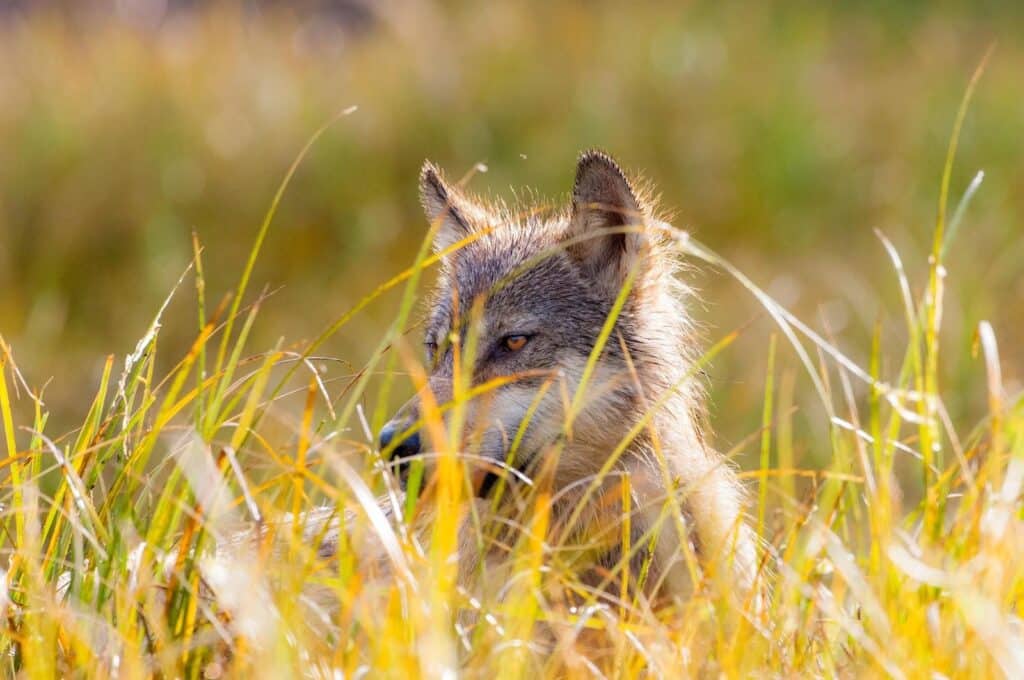By: Natalie Chen
The current state of environmental conservation is marked by unprecedented challenges as our planet grapples with various threats. Biodiversity loss, accelerated climate change, and the relentless destruction of natural habitats have placed our ecosystems in peril. In the face of these critical issues, it has become increasingly crucial to engage and educate the global community about the urgency of environmental preservation.
Visual storytelling through film is a powerful tool in this endeavor. The marriage of striking visuals, compelling narratives, and emotional resonance within the medium of film has proven unparalleled in its ability to capture the hearts and minds of audiences worldwide. Through the lens of a camera, the natural world’s beauty and fragility can be brought to life in a way that fosters a profound connection between viewers and the environment.
Producer and environmental filmmaker Ian McAllister delves into the historical and contemporary role of film in environmental advocacy, examining the pioneers and groundbreaking works that have paved the way for a new era of conservation communication. With his wealth of expertise behind the camera, he explores the potential for films to serve as catalysts for positive change, driving awareness, inspiring action, and shaping public policy. McAllister uncovers the transformative power of cinema in advocating for environmental conservation.
The Historical Role of Film in Environmental Advocacy
Early environmental documentaries serve as the cornerstone of environmental filmmaking, offering a window into the natural world and its intricate beauty. Through McAllister’s own lens, he illuminates the pristine wilderness of the Great Bear Rainforest in British Columbia, Canada. His films, such as “The Last Wild Wolves” and “Great Bear Rainforest: Land of the Spirit Bear,” not only captivated audiences with breathtaking visuals but also provided a platform for showcasing the delicate balance of ecosystems and the unique species that inhabit them. These early works laid the foundation for the exploration of nature’s wonders through film, fostering a sense of awe and reverence for our environment.
Environmental filmmaking has been enriched by the visionary efforts of trailblazers who harnessed the power of film to shed light on pressing environmental issues. Jacques Cousteau, a pioneer of underwater exploration, used his underwater documentaries to reveal the mesmerizing world beneath the ocean’s surface. Through films like “The Silent World” and “The Living Sea,” Cousteau transported viewers to the depths of the oceans, emphasizing the interconnectedness of all life forms and the urgent need for marine conservation.
Similarly, Jane Goodall’s groundbreaking work with chimpanzees in the Gombe Stream National Park in Tanzania was chronicled in films like “Jane” and “Jane’s Journey.” These films celebrated her contributions to primatology and emphasized the importance of conservation and the protection of endangered species.
How Historical Films Shaped Public Perception and Policy
Historical environmental films have shaped public perception and driven policy changes. “The Silent Spring,” a documentary inspired by Rachel Carson’s groundbreaking book of the same name, exposed the devastating impact of pesticides on the environment and human health. This film, directed by David Fowler and released in 1963, spurred widespread concern and led to the banning of the pesticide DDT in the United States.
Similarly, Al Gore’s “An Inconvenient Truth,” released in 2006, presented a compelling case for addressing climate change. The film combined scientific evidence with engaging storytelling to raise awareness about the looming environmental crisis. Its impact extended beyond the cinema screen, inspiring global discussions on climate change and influencing government policies aimed at reducing greenhouse gas emissions.
“Historical films demonstrate the ability of cinema to transcend entertainment and serve as a catalyst for change,” says Ian McAllister. “They not only raised public awareness but also inspired action, galvanizing individuals and governments to address pressing environmental issues.”
These filmmakers captured the beauty and fragility of our natural world and used it to ignite a passion for environmental preservation that continues to drive the modern environmental film movement.

Contemporary Environmental Films: A Critical Analysis
In recent years, the realm of environmental filmmaking has witnessed a resurgence, with a new generation of documentaries that have captivated audiences and reignited discussions about our planet’s future.
Modern environmental filmmakers have honed their craft by employing storytelling techniques that resonate deeply with audiences. Whether through compelling narratives, emotional storytelling, or relatable human experiences, these filmmakers bridge the gap between complex environmental issues and the general public.
“Narrative storytelling plays a pivotal role in engaging viewers,” notes Ian McAllister. “By weaving a compelling story around environmental themes, filmmakers can connect with audiences on a personal level.”
Stories of conservation efforts, wildlife survival, or human interactions with nature allow viewers to empathize with the subjects and become emotionally invested in their fate. This emotional connection often serves as a catalyst for action, motivating individuals to become environmental advocates themselves.
Stunning visuals are another hallmark of contemporary environmental films. The use of high-definition cinematography and advanced filming techniques immerses viewers in the natural world, creating a sensory experience that evokes awe and reverence. Such visuals not only captivate but also inspire a sense of wonder, fostering a deep appreciation for the beauty and biodiversity of our planet.
The Role of Technology in Enhancing Visual Impact
Advancements in technology have played a pivotal role in elevating the visual impact of environmental narratives. High-quality cinematography, drones, and even virtual reality have revolutionized the way filmmakers capture and convey environmental stories. High-definition cinematography allows for unprecedented clarity and detail, enabling filmmakers to showcase the intricate beauty of the natural world. From the iridescent scales of a tropical fish to the delicate veins of a leaf, these visuals immerse viewers in the minutiae of nature, fostering a deeper connection and appreciation for its complexity.
Drones have opened up new perspectives, providing filmmakers with the ability to capture sweeping aerial shots and access remote locations previously inaccessible. This technology has expanded the scope of environmental storytelling, offering viewers a bird’s-eye view of our planet’s vast landscapes and changing ecosystems. Virtual reality (VR) represents the cutting edge of immersive storytelling. Environmental filmmakers are increasingly exploring VR as a tool to transport viewers into the heart of the action, allowing them to experience nature’s wonders as if they were there.
Contemporary environmental films have not only continued the legacy of their predecessors in raising awareness but have also leveraged advanced storytelling techniques and technology to connect with audiences on a profound level. The combination of compelling narratives, stunning visuals, and immersive experiences has solidified the role of film as a potent tool in advocating for environmental conservation.
Film has a unique capacity to bring the critical issue of environmental conservation to the forefront, combining evocative visuals, compelling storytelling, and emotional depth to spur action. Transforming abstract environmental concerns into visceral experiences engages viewers on a profoundly personal level. Advances in cinematography, drone technology, and virtual reality deepen this engagement, creating an immersive narrative that not only educates but also inspires collective action toward sustainability and stewardship of the environment. This potent blend of visual beauty and narrative power positions cinema as an essential tool in driving awareness and action for the health of our planet, exemplified by the work of filmmakers like McAllister.
Published by: Martin De Juan







